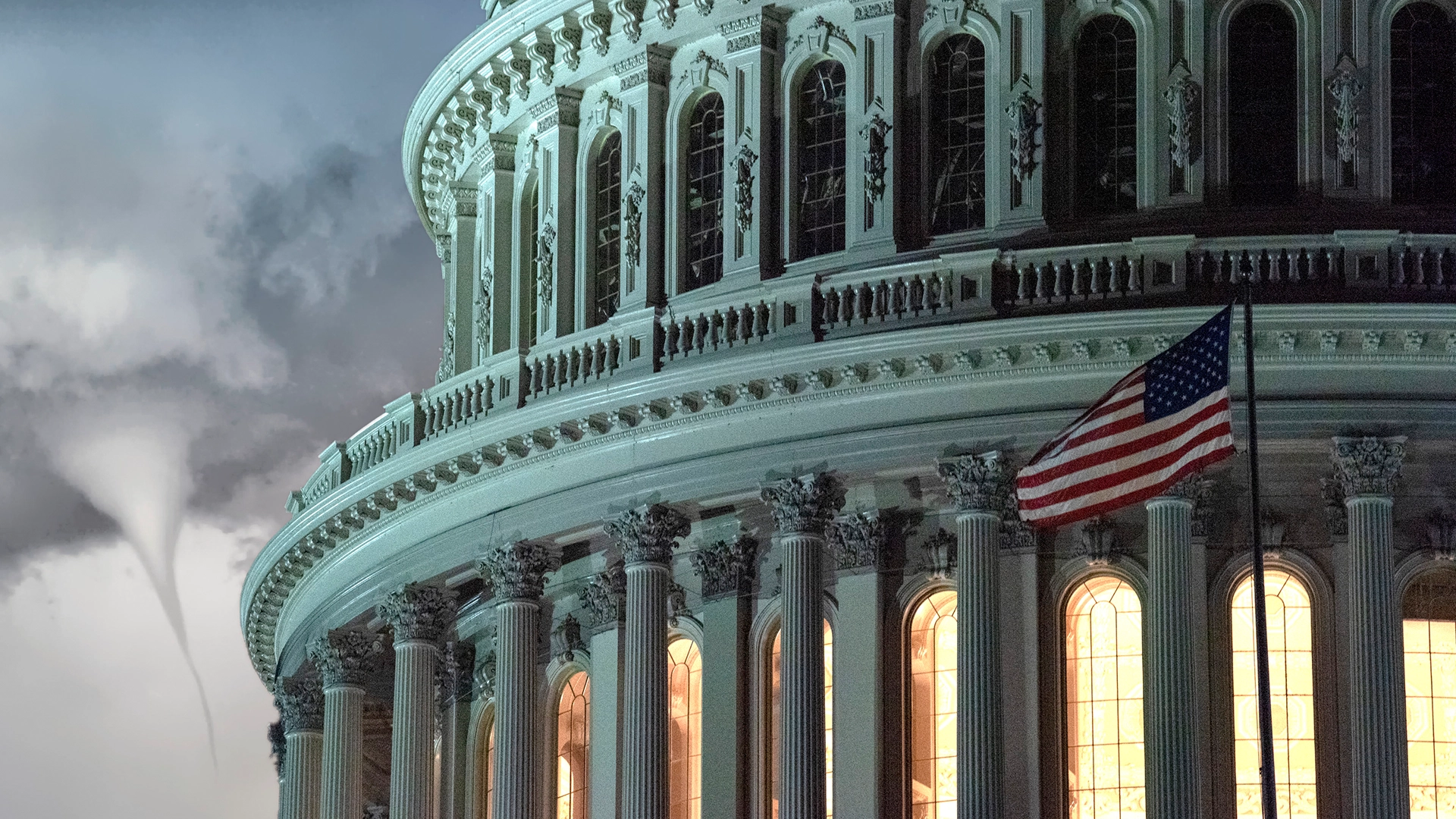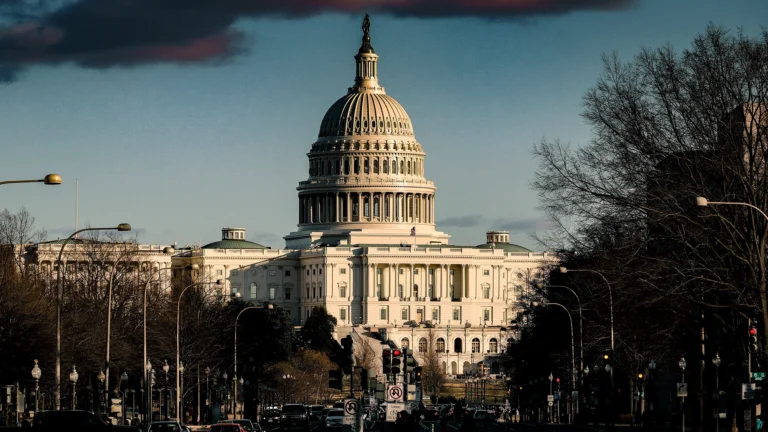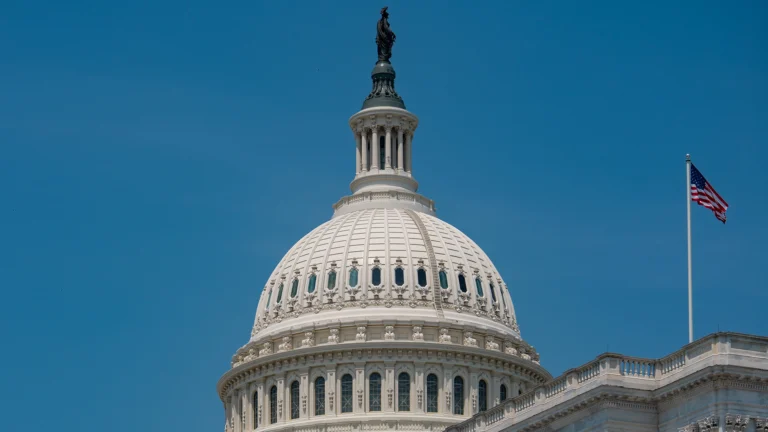|
Getting your Trinity Audio player ready...
|
Recent analyses reveal that government shutdowns have tangible economic consequences, with the congressional budget office estimated reduction in GDP growth of up to 0.2% in a single quarter. This stark figure underscores the critical importance of understanding how a government shutdown works; not only for policymakers but also for business leaders, entrepreneurs, and citizens who rely on the continuity of federal operations.
Have you ever wondered what precisely triggers a government shutdown? How does it affect federal workers, essential services, and the broader economy? What decisions and processes lie behind the scenes when funding gaps emerge? By exploring these questions, you gain clarity on the mechanisms that govern federal funding and the ripple effects that follow disruptions.
Definition of a Government Shutdown
A government shutdown happens when Congress does not pass or the president does not sign the bills needed to fund the federal government, causing many services to stop and affecting federal workers and public programs.
Table of Contents
- Definition of a Government Shutdown
- What Is a Government Shutdown?
- Causes Behind Government Shutdowns
- Federal Budget and Fiscal Year
- Impact on Federal Workers and Essential Services
- Effects on Government Services and the Public
- The Role of Continuing Resolutions
- Economic Consequences of Shutdowns
- Conclusion: Navigating the Complexities of Government Shutdowns
- Frequently Asked Questions (FAQ)
- What happens to federal employees during a government shutdown?
- Are Social Security and Medicare benefits affected during a shutdown?
- How do government shutdowns affect national parks and public services?
- Can a government shutdown be avoided?
- Does the president have the power to end a government shutdown unilaterally?
What Is a Government Shutdown?
At its core, a government shutdown is a funding gap triggered by the failure to pass the 12 annual appropriations bills that finance federal agencies and programs for the entire fiscal year. Without this funding, federal agencies must cease operations classified as non-essential, furlough many federal workers, and limit the delivery of government services.
The Antideficiency Act legally prohibits federal agencies from obligating or spending money without congressional approval. When this happens, essential public safety and national security services, as well as mandatory programs like Social Security, continue to operate. These services are maintained to protect life and property, ensuring public safety and order even during a shutdown.
However, many discretionary programs, including national parks, visa processing, and environmental oversight, face suspension or severe limitations. Congress must pass 12 annual appropriations bills by October 1 to fund discretionary spending, or else a shutdown can occur. Key economic indicators like employment and inflation reports may not be released during a shutdown, complicating informed decision-making.
Causes Behind Government Shutdowns
Government shutdowns occur primarily due to disagreements and delays in the federal budget approval process. This section explores the key reasons behind these funding gaps, including political conflicts, budget priorities, and the role of temporary funding measures.
Political Impasses and Budget Priorities
Government shutdowns often stem from political impasses over budget priorities. Disagreements can center on spending levels, policy riders attached to appropriations bills, or contentious issues such as border wall funding or healthcare reform.
Continuing Resolutions as Temporary Solutions
When such disagreements persist, Congress may pass a continuing resolution (CR) instead of a full appropriations bill to temporarily fund the government. For example, the partial shutdown in 2018-2019, the longest in US history, was largely driven by disputes over border security funding.
Influence of Political Dynamics
Political dynamics between both the House and Senate, coupled with the president’s stance, can complicate the passage of funding legislation. Historical shutdowns have also occurred when a Republican Congress and President Bill Clinton clashed over budget priorities, resulting in significant funding disputes and government closures.
The Role and Limitations of Continuing Resolutions
When consensus is elusive, continuing resolutions (temporary funding measures) may be employed to keep the government open temporarily, though these are stopgap solutions that can prolong uncertainty.
Federal Budget and Fiscal Year
Overview of the Federal Budget
The federal budget serves as the federal government’s annual financial blueprint, mapping out projected revenues and expenditures for the upcoming fiscal year, which runs from October 1 to September 30. This budget is divided into two primary categories: discretionary spending and mandatory spending.
Discretionary spending, which covers areas like defense, education, and transportation, is determined each year through appropriations bills passed by Congress. In contrast, mandatory spending funds programs such as Social Security, Medicare, and Medicaid are automatically funded, without the need for annual approval.
Funding Gaps and Shutdown Triggers
When Congress fails to pass the necessary appropriations bills before the start of the fiscal year, the result is a funding gap that can trigger a government shutdown. During these periods, non-essential government services are suspended, and many federal employees are furloughed without pay.
Essential services (such as air traffic control, border protection, and certain operations of the National Park Service) continue to function, often with employees working without immediate compensation to protect public safety and maintain critical infrastructure.
Economic Impact of Shutdowns
The Congressional Budget Office has highlighted the significant economic impact of these disruptions. For example, the 2018-2019 partial shutdown, driven by a dispute over border wall funding during the Trump administration, resulted in an estimated $3 billion in lost GDP.
During shutdowns, agencies like the Environmental Protection Agency halt most inspections, and the National Park Service may close or limit visitor services, affecting both public health and local economies.
Human services programs may be affected during a government shutdown, including:
- The Supplemental Nutrition Assistance Program (SNAP), which may continue but often faces delays or reduced capacity.
- The Special Supplemental Nutrition Program for Women, Infants, and Children (WIC), which may experience funding interruptions.
- Temporary Assistance for Needy Families (TANF), which may also face risks or disruptions.
These delays and reductions can leave vulnerable populations without critical support during shutdown periods.
Impact on the Federal Workforce
The federal workforce, which includes about 2.1 million civilian employees, is directly affected by government shutdowns. In past shutdowns, such as those during President Bill Clinton’s administration and the 2018-2019 partial shutdown, hundreds of thousands of federal workers were furloughed, while essential employees, such as air traffic controllers and Transportation Security Administration officers, continued to work without pay.
Federal workers face immediate financial hardship during a shutdown, potentially missing mortgage or credit card payments despite receiving back pay later. During the 2018-2019 government shutdown, over 800,000 federal employees were either furloughed or required to work without pay.
Appropriations Process and Continuing Resolutions
To fund the government and avoid shutdowns, Congress must pass all annual appropriations bills before the fiscal year begins. If this process stalls, a continuing resolution can be enacted to temporarily maintain funding at previous levels.
While continuing resolutions keep the government open, they are not a long-term solution and can create operational uncertainty for government agencies, complicating planning and resource allocation.
Political Factors Influencing Shutdowns
Historically, government shutdowns have resulted from disagreements over spending levels, policy priorities, and contentious issues such as the Affordable Care Act, also known as Obamacare.
The appropriations process is complex, involving both the House and Senate, the President, and the Office of Management and Budget, which coordinates agency activities and helps implement the federal budget.
Importance of Timely Budget Passage
Ultimately, understanding the federal budget and fiscal year is essential for anticipating and mitigating the effects of government shutdowns. By prioritizing timely passage of appropriations bills and fostering bipartisan cooperation, Congress and the President can help ensure the continuity of essential government services, protect the federal workforce, and maintain economic stability.
Impact on Federal Workers and Essential Services
Federal employees are among the most directly affected during shutdowns. Non-essential federal workers are typically furloughed, meaning they are placed on temporary unpaid leave. These non-essential employees are prohibited from providing voluntary services during a shutdown, as doing so would violate federal law.
Essential employees, such as air traffic controllers and border protection agents, continue working but often without immediate pay, facing financial strain. Furloughed employees generally receive back pay once funding is restored, but the interim period can cause significant hardship.
The federal workforce’s disruption also reverberates through the economy, as reduced spending power and interrupted services affect communities and businesses nationwide.
Effects on Government Services and the Public
Shutdowns disrupt a wide range of government services. National parks and museums may close or operate with limited visitor services, affecting tourism and local economies.
Food Assistance Programs
Programs like SNAP benefits (Supplemental Nutrition Assistance Program) and the Special Supplemental Nutrition Program for Women, Infants, and Children (WIC) can face funding interruptions, jeopardizing support for vulnerable populations. Temporary assistance programs, such as Temporary Assistance for Needy Families, may also face risks or disruptions, leaving vulnerable groups without critical aid.
Veterans Affairs and Housing Services
The Department of Veterans Affairs and its employees may be affected by furloughs, work reassignments, or delays in services and back pay during a shutdown. Federal housing and urban development initiatives, including housing loans and support, can experience delays or reduced availability.
Passport Processing and Federal Loans
Other services, including passport processing and federal loan approvals, may be delayed. Passport services may be limited or experience significant delays during a shutdown, affecting travel plans for individuals and families.
Business and Environmental Impacts
Businesses and individuals may also face delays in obtaining federal permits, as shutdowns hinder the ability to obtain federal permits and federal approvals, disrupting business operations and investments. Tax refunds may be delayed, even though tax payments are still required.
Agencies such as the Environmental Protection Agency may halt inspections of chemical facilities and enforcement activities, potentially impacting environmental protection and public health.
The Role of Continuing Resolutions
To avoid or delay shutdowns, Congress often passes continuing resolutions (CRs), which temporarily extend funding at existing levels. Congress frequently passes continuing resolutions when lawmakers are unable to agree on appropriations before a deadline. Every government shutdown since 1990 has been ended with a continuing resolution, highlighting their critical role in resolving funding impasses.
Reliance on CRs can contribute to a cycle of short-term fixes, increasing the risk of future funding gaps and shutdowns. The use of continuing resolutions lacks consideration for changing policy needs or the value of each program.
Historically, Congress has used continuing resolutions for one-quarter to one-third of fiscal year funding in recent years, underscoring their frequent use as a stopgap measure.
Economic Consequences of Shutdowns
Impact on GDP and Economic Output
Beyond immediate operational disruptions, government shutdowns have measurable economic impacts. The Congressional Budget Office estimated that the five-week partial shutdown in late 2018 and early 2019 (during the Trump administration) reduced GDP growth by approximately 0.1% in the fourth quarter and 0.2% in the first quarter of 2019, equating to billions in lost economic output.
Goldman Sachs estimates that a prolonged government shutdown could reduce real GDP growth by 0.15 percentage points in the fourth quarter, with a bounce back in the first quarter of the following year. JPMorgan economists estimate that each week of reduced government activity can shave 0.1 percentage points off annualized GDP growth.
While a shutdown lasting only a few days is unlikely to have a significant economic impact, prolonged shutdowns risk longer-term damage to economic confidence and growth by disrupting essential government functions. Prior shutdowns have shown that these funding gaps not only stall government funding but also create ripple effects across the economy, affecting businesses, consumer confidence, and investment decisions.
Effects on Businesses and Investment
Businesses dependent on federal contracts, federal loans, and permits face delays that can stall investment and hiring decisions. The absence of key federal economic data releases during a shutdown can lead to market uncertainty and impact consumer confidence.
Reduced consumer spending by furloughed federal workers further dampens economic activity. Shutdowns also tend to cost money rather than save it, due to the implementation of contingency plans and lost revenue from user fees.
Continuity of Essential Services
The postal service continues to operate during government shutdowns, ensuring uninterrupted mail delivery. Essential services such as power grid maintenance also continue to function to maintain public safety and infrastructure stability.
Delays in Medical Research and Small Business Support
However, agencies like the National Institutes of Health experience delays in medical research and clinical trials, impacting patient access to new treatments. The 2018-2019 shutdown delayed over $2 billion in loans to small businesses due to the Small Business Administration being unable to make new loans.
Conclusion: Navigating the Complexities of Government Shutdowns
Understanding how a government shutdown works highlights the complex interplay between federal funding processes, political negotiations, and their far-reaching effects on society. Shutdowns not only disrupt government functions but also impact federal workers, essential services, businesses, and the broader economy.
For business leaders, policymakers, and citizens alike, recognizing the causes and consequences of funding gaps is vital. Advocating for timely, bipartisan budget agreements and supporting the use of continuing resolutions when necessary can help prevent or minimize shutdowns. Preparing contingency plans and staying informed about government operations can mitigate risks during such periods.
Ultimately, maintaining consistent government funding and avoiding shutdowns are crucial to safeguarding public trust, ensuring the continuity of critical government services, and promoting economic stability in the United States.
Frequently Asked Questions (FAQ)
What happens to federal employees during a government shutdown?
Non-essential federal workers are typically furloughed and do not receive paychecks during the shutdown, though they usually receive back pay once funding is restored. Essential employees continue working but may face delayed pay.
Are Social Security and Medicare benefits affected during a shutdown?
No. These programs are funded through mandatory spending and continue to operate during a shutdown, ensuring beneficiaries receive payments without interruption.
How do government shutdowns affect national parks and public services?
Many national parks and museums close or operate with limited services during a shutdown, reducing visitor services and impacting local economies. Essential services like law enforcement within parks generally continue.
Can a government shutdown be avoided?
Yes. Passing all required appropriations bills or a continuing resolution before the fiscal year begins can prevent a shutdown. However, political disagreements often complicate this process.
Does the president have the power to end a government shutdown unilaterally?
No. Ending a shutdown requires Congress to pass funding legislation and the president to sign it. The president cannot unilaterally reopen the government without congressional approval.



